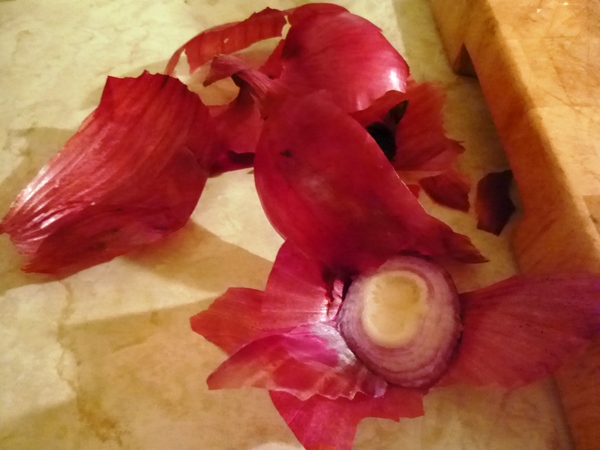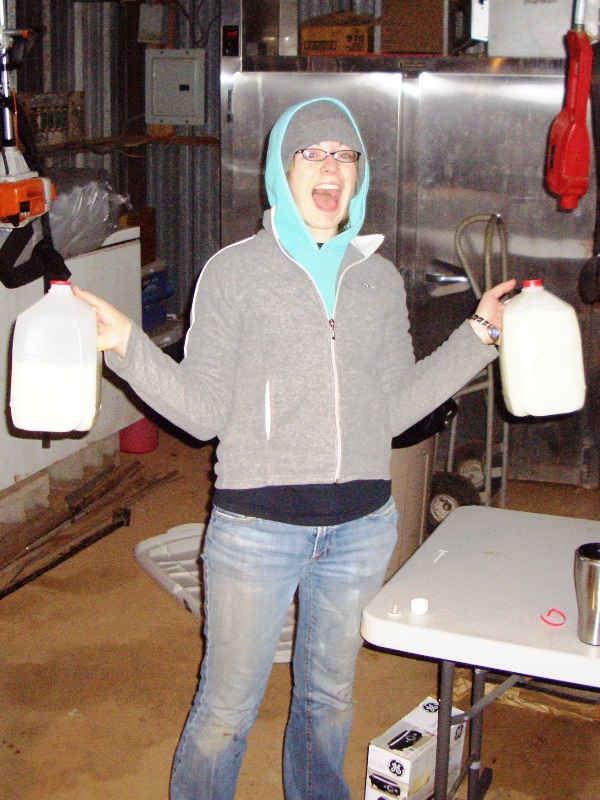I was of a frugal nature before we started farming, and have become all the more so now that we are full-fledged self-employed workers of the land. We count ourselves as highly blessed, despite a tight budget most of the time. We have plenty to eat, sturdy clothes to wear, and a lovely farm to live on and work, so I’m not sure whether it’s the self-employed part or the our-own-farm part that makes me stretch every dollar or that makes me want to use every ounce of food that comes across my table. But the bottom line is that I do. I hate to see food go to waste because we’ve worked so hard to produce it, or in some cases, we’ve gone to great lengths to buy it from some other farmer, or from the best source we can find locally.
So what are three things I never throw away?
This thought process began yesterday at a lunch gathering after our church met for morning worship. We brought a simple meal for our family to eat there “on the grounds”—leftover butternut squash and grilled pork chops. Once finished, I tried to discreetly scoop up all the bones from our plates and hide them away near our things so no one would inadvertently throw them in the trash. “They’re not trash!” my inner crunchy weirdo shouted, so I brought extra plastic wrap with the intention of carrying them back home again. I always do stuff like this. Why?
Because there’s still a lot of good stuff in those bones! Even after we’d picked the bones clean of meat (and our pork chops are worth picking because the meat is soooo good!), I intended to make broth from those bones. And so I thought I’d share a few other things that I never throw away in the kitchen. Here are my top three:
Bones.
Any bone that comes across my table is broth-worthy. It’s like free food, and you’d be surprised how fast a stash of bones will grow into a large enough batch to make some broth. I just keep a plastic grocery sack in the freezer, and into there the bones and bits of veggie trimmings go until it’s full, a handful at a time. Once it’s full, I start another, and when I have two full bags, it’s time to make broth.

Other kinds of things I save for broth: Onion Scraps!
My favorite thing to save for broth (besides bones) is corn cobs and potato peelings. The flavor they add to the broth is so delicious. So as long as whatever I have isn’t rotting or moldy, it goes into the broth bag. Even after it’s made into broth, all the well-cooked bits then win their place as compost and dog food. The dogs have no problem chomping through the softened bones after I’ve cooked them for 48 hours. They turn their noses up at kibble when they have bones to chew. Every scrap counts!
Grease.
As a kid, you and I were taught clever ways to dispose of the grease that cooks out of hamburger meat, sausage, or bacon, like pouring it into a tinfoil-lined bowl and sticking that in the freezer. And of course, we were taught NEVER to pour it down the drain. Right?
But once I learned about the benefits of pasture-raised meats, my cleverness was diverted to thinking of ways to incorporate that “grease” into our diets! Yes! The fear of the fat clogging the sink should not mislead the eater to thinking that same fat will likewise clog their major blood vessels. Nope. Doesn’t work that way. At least not the right kind of fat. Animal fat. Yep. Read about it. No more fat phobia!
So now I try never to waste any fat. I save it in little containers on the counter for basting the next chicken or for greasing the egg skillet or for frying some potatoes. I even take a little pleasure in the ability to transfer the unique flavor of a particular batch of fat into some new dish. Like bacon flavoring for the chicken I’m roasting. Or onion ring flavoring for the eggs I’m scrambling. Fat is so interesting and so filling. So I never throw it away. Even when I clean out the fryer, that grainy, dark brown gooey stuff just goes to the dogs. They like it salted. Yep. Salted fat dog food. No waste.
Sour milk.
Once upon a not-so-long-ago time, we had milk cows. And it was a lot of work to get out there every morning and evening to milk those cows, on Christmas, on Thanksgiving, on birthdays, rain or shine, at 20 degrees and 110 degrees outside. So the milk became quite precious. And though we now purchase our raw milk from another farm instead of raising it ourselves, it’s still regarded as super-valuable, and you do your best never to waste it.
So when our raw milk gets to be about two weeks old and starts to turn “wonky,” as we call it, I begin to find uses for it other than just drinking. Unlike pasteurized milk, which goes truly gross when it sours, raw milk sours by transforming into buttermilk, so I start using it in pancakes or biscuits. I’ve even had great success using it in gravy and cheese sauces! It is cheese, in some sense, or at least the beginning of many types of cheese. And it will keep in the fridge as “buttermilk” for a month. I’ve used the same gallon of milk for 6 weeks! Talk about shelf life!

Here I am being excited about raw milk.
I know, I’m weird. But maybe there’s something to this. We can get a lot of miles out of a little bit of high-quality food by taking care to use every last bit of that food for something in the kitchen. Now you might be thinking to yourself, “But I don’t have grass-fed burger or raw milk. Is it safe to save the bones/fat/sour milk from conventionally raised animals?” Well. The truth is, I don’t know. It begs the question, is the protein portion safe? If the bones and fat from cheap, poorly raised meats aren’t safe and nourishing, why would the protein from those sources be safe and nourishing? But cheap protein is still protein, right?
That’s a question we all have to deal with. I dealt with it after the last time I ever bought conventional ground beef. I made spaghetti for my coworkers one summer (they were starving bachelor students, and I was newly married with a heart for cooking and a love for nourishing food). At home we used grass-fed ground beef, which was quite expensive, so I decided to go halvsies and do a chub of cheap stuff and a couple packs of premium grass-fed. I’ll never forget the stark contrast in texture of the two meats in the sauce. You could plainly tell the difference, and the store-bought stuff was DISGUSTING. It reminded me of canned Beanie Weanie. I never bought hamburger at the store again.
So I hope this article has given you a few tips to save money so you have more money to put toward the good stuff. Happy eating!

